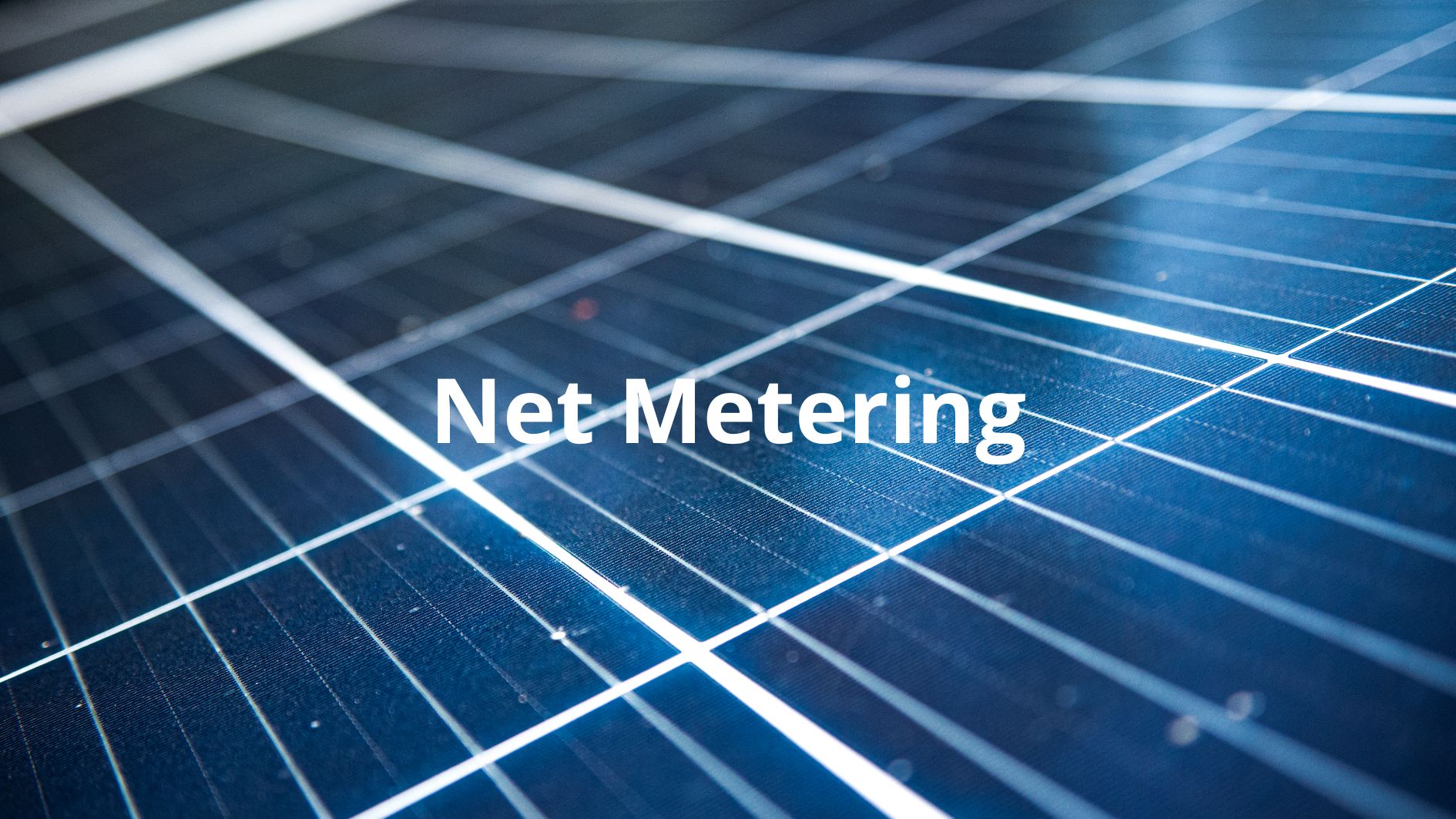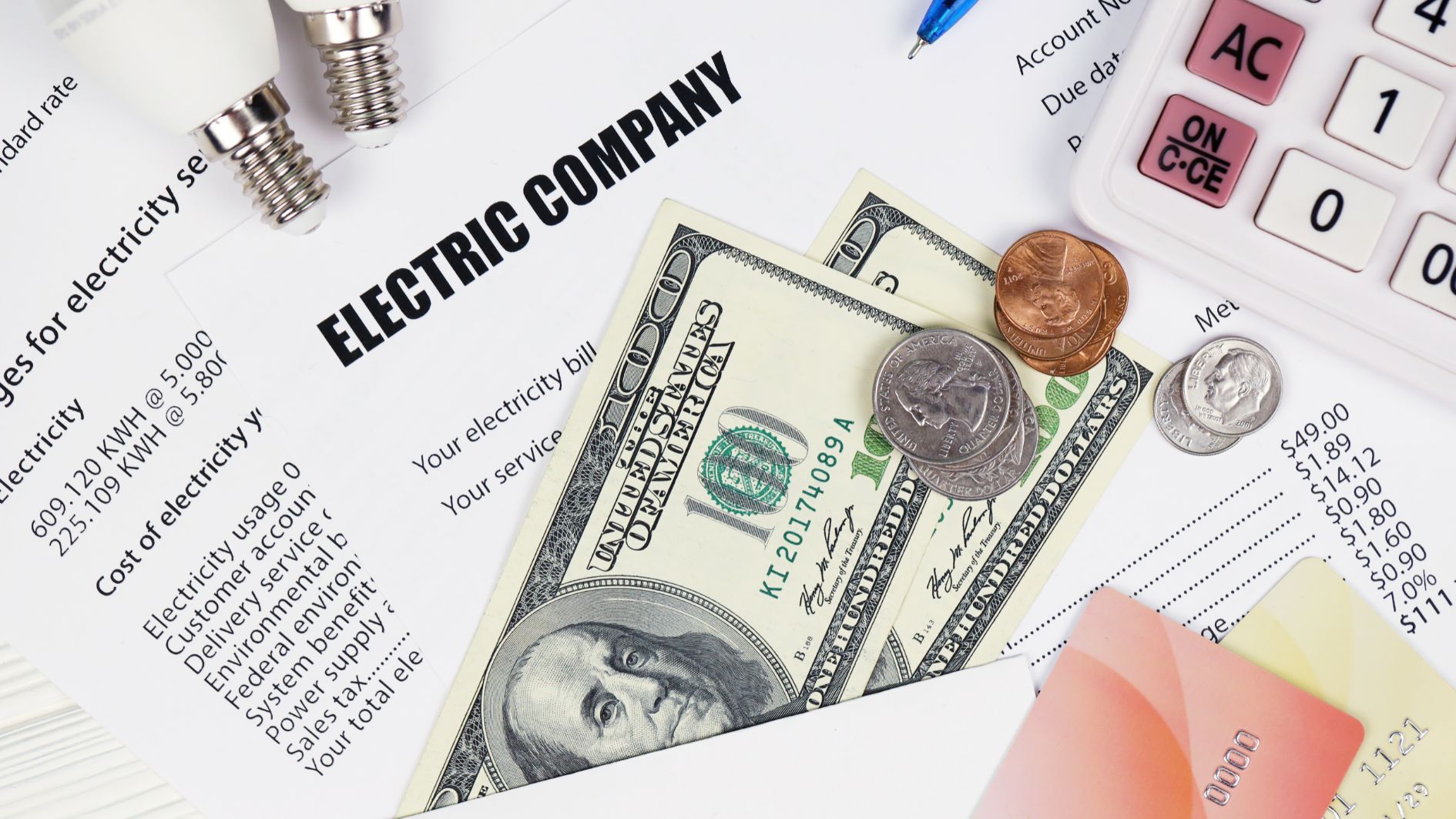Image source: Canva.com
You’ll still receive an electricity bill with solar, but you might not owe anything on it. A common misconception is that installing solar panels eliminates your utility bill entirely. This isn’t true for most cases: the majority of solar panel systems in the U.S. are grid-tied, meaning you can draw power from the grid when your solar panels aren’t producing enough energy. As a result, even with solar, you’ll continue to receive a monthly electric bill. So how much will you owe? Below, we explain the key factors that influence your post-solar electricity costs, including solar production, net metering policies, and fixed utility charges.
What Affects Your Electricity Costs After Going Solar?
For property owners with grid-tied solar systems, electric bills will still come in, but the charges can vary widely based on the following factors:
Solar Electricity Production
One of the biggest drivers of your monthly bill amount after going solar is how much electricity your solar panel system generates and whether that generation meets your consumption. If you’re using more electricity than your solar panel system generates, your utility company charges you for the extra electricity you draw from the grid. Conversely, if your solar panels produce more electricity than you use in a given month, you may see a credit on your electricity bill, depending on your utility company’s net metering policy.
Net Metering Policy
Net metering is a solar incentive that compensates you for excess solar electricity generation. With net metering, if your solar panels produce more electricity than you’re using, that electricity is sent to the grid in exchange for a credit. You can “bank” these credits and use them when your solar panel system isn’t producing enough (or any) electricity.

Net Metering: Your Guide to Solar Energy Billing
Net metering policies vary by state and utility company. Importantly, not every state requires utilities to provide net metering to their solar customers. For instance, states like Alabama, Tennessee, and South Dakota do not have net metering mandates. Therefore, utility companies don’t need to compensate their customers for solar electricity sent to the grid. Most states currently have active net metering incentives, requiring investor-owned utility companies (IOUs) to offer credit to customers sending excess electricity to the grid.
If your net metering credits are lower than what you pay to draw electricity from the grid, you could still owe money even if your solar panels meet 100% of your consumption needs. To avoid surprises, research your area’s net metering policies before signing a solar contract.
Tip: If net metering isn’t favorable in your region, consider adding a solar battery to store excess energy. Although solar batteries increase upfront costs, they allow you to use stored energy instead of sending it to the grid, reducing reliance on unfavorable net metering rates.
Fixed Utility Charges
Utility companies often impose fixed charges, such as customer service or delivery fees, which remain the same regardless of your energy usage. These fees typically aren’t covered by net metering credits, so you may still owe money each month.
Before going solar, check with your utility company to understand which fixed charges you’ll still need to pay. Many solar providers can also show sample bills from past customers, giving you a realistic view of what to expect.
Is Solar Worth It If You Can’t Offset Your Entire Electric Bill?
While it’s ideal to eliminate your entire electricity bill with solar panels, this isn’t always possible, especially in areas with less favorable net metering policies or limited system size. However, even partial coverage of your electricity needs can lead to significant savings over time.
When you install solar panels, you effectively lock in your electricity rate for 25+ years (the typical lifespan of solar panels). This protects you from rising energy costs and ensures long-term savings. Even if solar only covers part of your energy consumption, it can still reduce your bills and provide thousands of dollars in savings, especially in areas with high electricity rates.
Note: Electricity costs vary widely across the U.S. Regions like the Northeast and California face higher energy rates, while the Pacific Northwest and the South tend to have lower costs.
How to Estimate Your Solar Savings
Calculate Total Costs
Determine the cost of the solar system and installation required to meet your energy needs.
Apply Incentives
Subtract Federal Tax Credit and any state or local incentives from the total cost.
Assess Your Power Bill
Analyze your household’s annual electricity expenses.
Estimate Savings
Determine how much of your electricity bill will be offset by your solar system’s efficiency and sunlight exposure.
Find the Break-Even Point
Divide the adjusted cost of your solar system by your estimated annual savings to determine how many years it will take to break even.
Tips to Maximize Solar Energy Savings

Optimize Panel Placement
Ensure panels are positioned to maximize sun exposure and avoid shading from nearby structures or trees.

Invest in Quality Equipment
High-efficiency panels and inverters can significantly boost energy production and long-term savings.

Take Advantage of Incentives
Research federal, state, and local incentives, including tax credits, rebates, and grants, to reduce upfront costs.

Utilize Net Metering
If available, net metering can help offset your bill by providing credits for excess energy.

Consider Energy Storage
Add a solar battery to store excess power for future use, reducing reliance on the grid.
Even if you can’t completely eliminate your electricity bill, installing solar panels can drastically reduce your energy costs and protect you from rising utility rates. By understanding solar production, net metering policies, and fixed charges, you’ll be better prepared to maximize your savings and make an informed decision about going solar.





